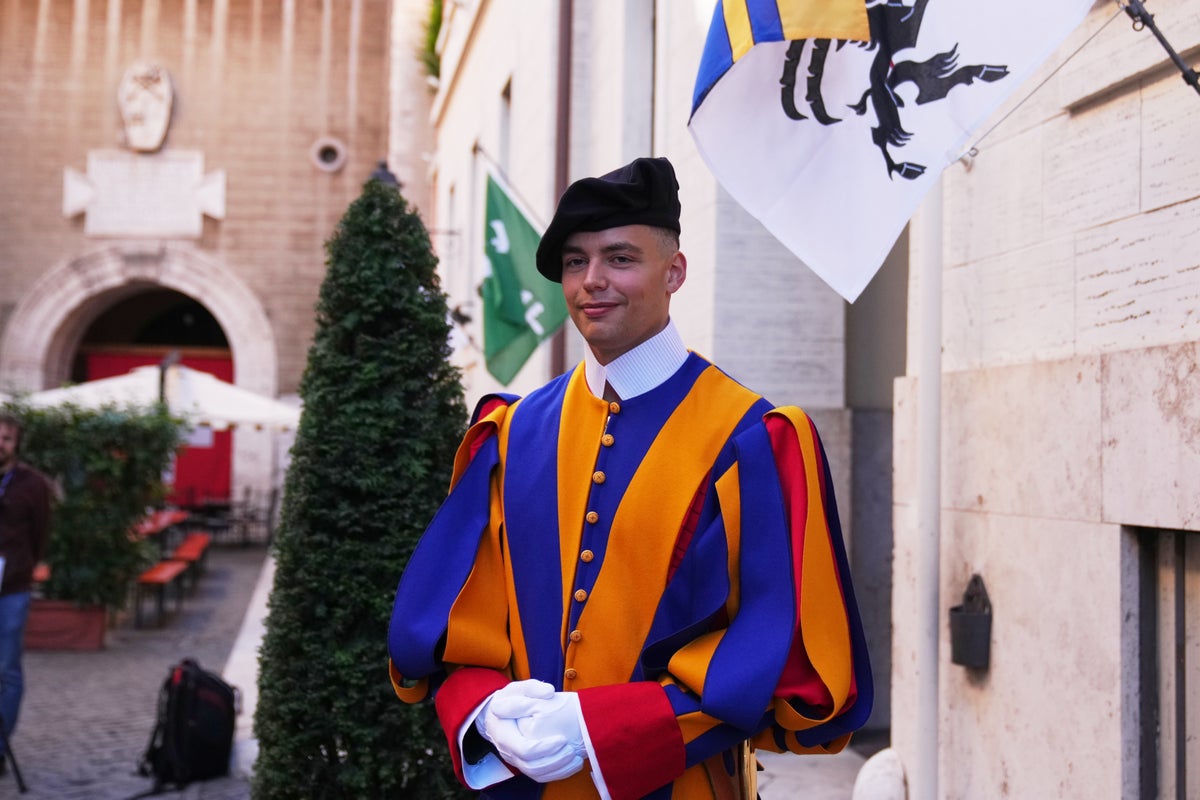
The world’s oldest army, the Swiss Guards, has unveiled a new uniform, though their iconic Renaissance-era attire remains untouched. This additional ensemble, designed for formal, non-ceremonial events such as diplomatic receptions or official dinners beyond the Vatican walls, was showcased by Colonel Christoph Graf, the commander.
He presented the new look at the army’s barracks, ahead of the annual swearing-in ceremony for 27 new recruits this Saturday. The uniform itself is a black wool suit, featuring two rows of buttons, a distinctive yellow and white belt, and a Mao-style collar. Colonel Graf explained that this design is, in fact, a faithful recreation of a centuries-old suit previously worn by Swiss Guard officials, which had been phased out in 1976.
The Swiss Guards tried an update a decade ago, didn’t like it, and commissioned a more faithful version that will get its first official use at a gala reception Friday on the eve of the swearing-in. An unnamed benefactor footed the bill for the uniforms, worn by just the senior ranks, which cost around 2,000 euros (2,300 dollars) apiece, officials said.
The world’s oldest and smallest army
The corps, which historians consider the oldest standing army in the world, was founded in 1506 by Pope Giulio II. Tradition has it that he was so impressed by the bravery of Swiss mercenaries that he asked them to defend the Vatican. Ever since, for more than 500 years, Switzerland has been supplying soldiers to the Vatican.
Usually, the swearing-in ceremony is held on or near May 6 to commemorate the day in 1527 when 147 guardsmen died while protecting Pope Clement VII during the Sack of Rome.
This year’s ceremony was postponed following the death in April of Pope Francis and the conclave that elected Pope Leo XIV.
The new uniform is one of several outfits the guards wear. The most famous is the “Gala Uniform,” which despite popular legend was not designed by Michelangelo. Rather, it was designed by Commander Jules Repond in the early 1900s and is based on the colors of the Medici family, according to the corps’ website.
Visitors to the Vatican will also see guards policing the city state’s main entrances in navy uniforms topped with a beret.
A new barracks that may, or not, have women
This year’s ceremony comes as plans are progressing to renovate the aging barracks for the guards to make better use of the space and increase the number of dormitory-style rooms that could, in theory, one day allow for female recruits.
There are currently no such plans, but the barracks’ cramped housing has long been cited as one of the reasons why women couldn’t be admitted. The new architectural plans call for a flexible configuring of the buildings that could, if the pope were to approve it one day, allow for a female section, said Jean-Pierre Roth, president of the foundation created in 2016 to raise money for the renovation of the barracks.
“This is not our decision,” he stressed. “The only thing we have done is that when everything is ready, if we want a special section for females, it’s possible, no problem.”
The renovation process is complicated given Vatican City is a UNESCO World Heritage Site, which means any renovation must be approved by the U.N. body’s technical experts. The Vatican received the first green light to its architectural plans in 2023 and is expected to present revised plans in the coming weeks, Roth said.
“We expect the final decision to be as positive as the first one,” he said.
Roth, the former president of the Swiss National Bank, said 48 million euros had so far been raised in cash and financial pledges, but that construction costs in Rome had increased significantly since the first budgets were prepared and that a new fundraising appeal would be launched in 2026.
Because of COVID-19, a papal transition and other delays, the original target will be missed to have the new barracks up and running by 2027, the 500th anniversary of the Sack of Rome. Now, the hopes are that the construction can begin in 2027, Roth said.
The world’s oldest and smallest armyA new barracks that may, or not, have women
